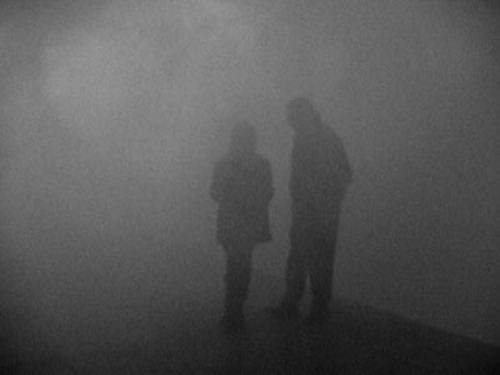In his video “Embodied Knowledges,” Lasch states, “Social art does not only have to be about the relationship between the living. It can be about the relationships between living and dead.” Teresa Margolles’s famous piece, Vaporización (2002) is an excellent representation of social art that explores this relationship. Margolles fills the gallery with a foggy mist created from the disinfected water used to wash corpses of drug cartel murder victims in a Mexico City morgue. Margolles’s works focus on social and political injustices of her home country. Her art shocks audiences because the reality of death faces the viewer in a disturbingly unmediated fashion. Margolles points out how the social injustices in Mexico translate into violence by taking the violence and converting it into simple and poetic forms. The beauty of them is intentionally not what visitors would expect to match such brutal content. Visitors of her works are forcefully put into situations where they cannot treat the depicted dead as completely foreign, non-related people. They are forced to acknowledge the dead as members of their own group and, thus, must take on some form of accountability. Margolles’s works have a societal effect, as they transfer and spread the responsibility for the Mexican dead. She causes individuals to realize that the social problems are not the issues of faraway, distant countries, but are the responsibility of the global community.


